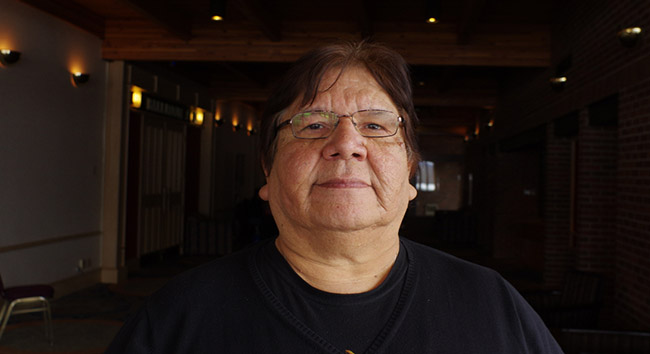Getting back to traditional governance

By Rick Garrick
THUNDER BAY — Kettle and Stony Point Chief Tom Bressette says traditional governance practices were more effective than current practices during the Governance Development Network’s Understanding the Foundations of Community Governance conference.
“We (learned) how our people ran our communities from a perspective of First Nation view, which seemed to be more of an effective way to do things than moving and seconding,” says Bressette, a chief advisor with the Governance Development Network. “Everyone is allowed in the discussion, not just key politicians. So that makes it a more effective political way of communicating the needs of the whole community.”
Bressette says some of the traditional governance structures are still being practiced.
“In a lot of ways, women were the ones who picked leaders in communities,” Bressette says. “I watched how they operated and treated other people, so they got a good view of everyone and they were the ones who usually picked the leadership. That gave more of a direct voice, but nowadays you see, even in our groups, more women taking the role of chief.”
Bressette says children were educated by the women before the government imposed their education system on the communities.
“They were always educated what their jobs were in the community, but Elders played a part in that too,” Bressette says. “They were the ones who looked after the teenagers and shaped them. That is gone out of our existence and that is why we see a lot of structural challenges in our community, like youth committing vandalism or doing things that are inappropriate. It’s because they’ve lost connection with the teachers, our grandparents.”
Bressette also delivered a presentation on inherent rights during the conference, which was held March 21-23 at the Valhalla Inn in Thunder Bay. About 70 representatives from First Nation communities across northern Ontario attended the conference.
“I explained what the inherent right is to First Nations people,” Bressette says. “There is a different understanding from non-native people about our rights. There always has been and I think that is why there is such a disparity in this country between our people and the ones who moved here from somewhere else.”
Fort William’s Ian Bannon says the conference was an “excellent opportunity” for the participants to share their ideas on governance.
“It is a prime opportunity for members of the various communities to get together, share their ideas and benefit from the experiences from the other First Nations that they have had in the development of their plans,” says Bannon, Fort William’s director of lands and properties.
Bannon says it is important for leadership to communicate with youth about the initiatives they are working on.
“It is our younger members that are going to be carrying our First Nations forward with all of the future development,” Bannon says. “They need to have that insight of what we are working on, the developments we are trying to achieve and how they all tie together with the various rights and titles that we need to have with our ongoing discussions with economic development, resource development and so on.”
The Governance Development Network is a grassroots community-based organization that promotes good governance practices for First Nation communities across Ontario. The organization holds conferences twice a year, one in the south and one in the north.

